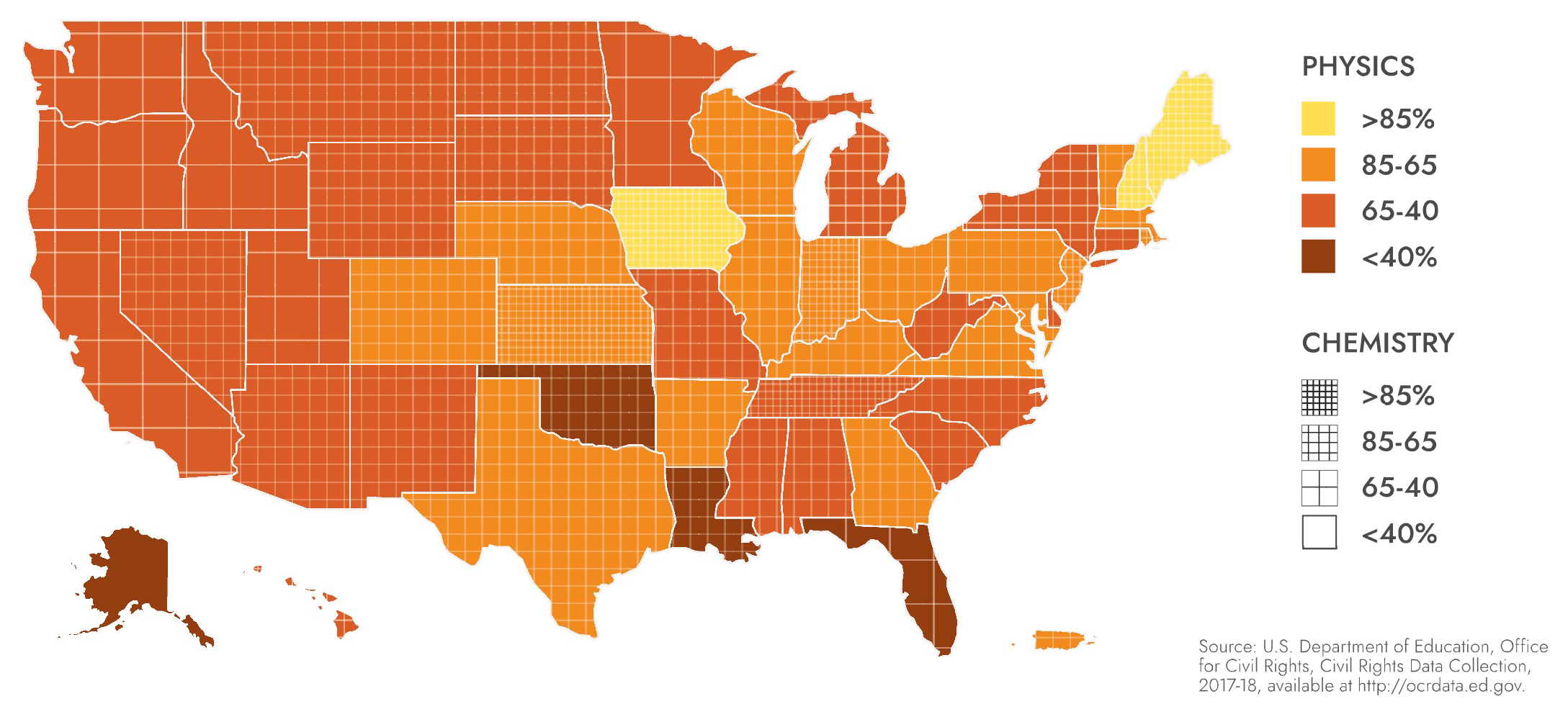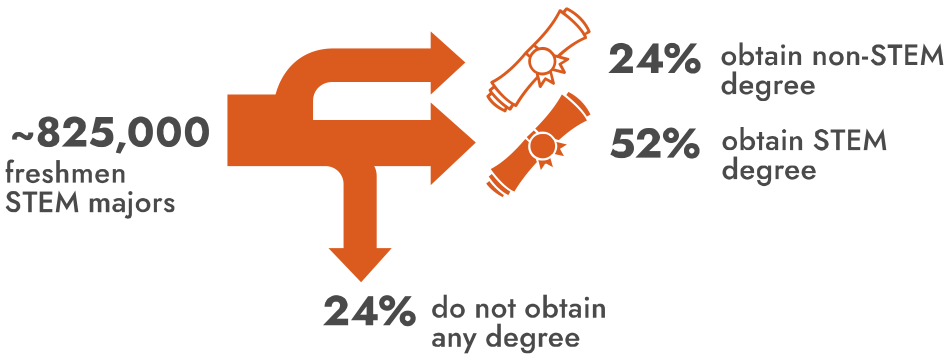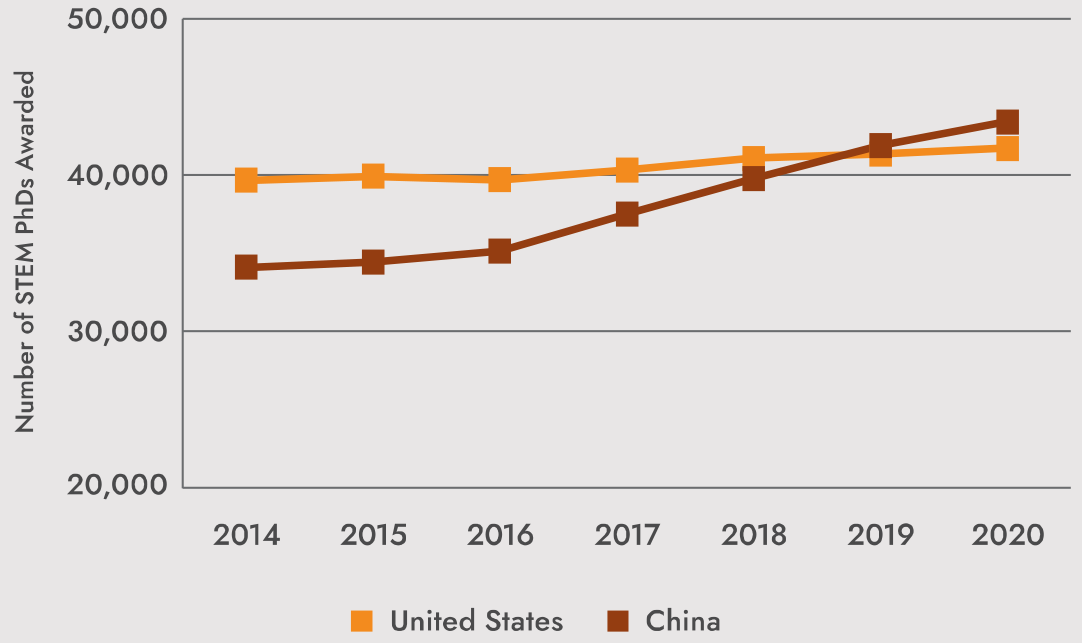Building Strong Homegrown Talent: An American STEM Workforce Strategy
Congress should authorize and fully fund a national workforce strategy that includes:
- Significantly expanding an improved NSF Noyce program.
- Supporting annual research opportunities for undergraduate STEM majors at their home institutions across the nation.
- Providing a substantial increase to the NSF Graduate Research Fellowship Program (GRFP).
- Unlocking the untapped potential of domestic workers by providing opportunities for the missing millions in STEM.
A National STEM Workforce Crisis
A growing STEM teacher shortage, hundreds of thousands of undergraduate STEM majors failing to finish their degrees, and a significant nationwide shortage of advanced degree-holding STEM talent threatens to erode U.S. economic and national security.
Ensure Quality K-12 STEM Education for Every Student in the U.S.
This year, millions of U.S. students will attend a high school where critical STEM classes are not offered
More than 70% of U.S. schools report having difficulties in filling positions with qualified candidates
Percent of High Schools Offering Physics or Chemistry by State

RECOMMENDATION
A robust increase to the NSF Noyce Teacher Scholarship Program will help fill the estimated teacher shortage by supporting teacher preparation programs and high-quality STEM teachers across the U.S.
Dramatically Increase the Retention of STEM Majors Through Paid Research Experiences at their Home Institutions
- Only 52% of the 800,000 undergraduate students who start a major in STEM each year successfully graduate with a STEM degree.
- Paid professional opportunities related to STEM careers create a sense of belonging and financial support that improve the retention of STEM students
Attrition rate of STEM majors is hurting domestic workforce

Source: Estimations based on latest available data: Bachelor's degrees awarded in 2022 IES, STEM attrition rates IES
RECOMMENDATION
A fully funded program at NSF that supports a substantial number of semester-long, paid, part-time research opportunities annually for undergraduate STEM majors at their home institutions will increase the retention of talented American students in STEM careers.
Support the Growth of Domestic Advanced Degree STEM Workers
Between 2014 and 2020, the number of STEM PhD graduates in the United States increased by less than 5%, whereas in China it increased by 27%, making China the largest producer of STEM PhD holders since 2020. The U.S. federal government plays a critical role in the creation of the U.S. STEM advanced degree holders.
The U.S. No Longer the Major Producer of STEM PhDs

Source: NSF NCSES Science & Engineering Indicators 2024
RECOMMENDATION
A substantial increase for NSF's GRFP program will ensure a strong, homegrown, advanced degree-holding workforce.
Providing Opportunities for the "Missing Millions" in STEM
In physics, for example, participation by women has remained around 20% for decades and fewer than 15 Black physicists earn a PhD each year, dramatically out-of-step with nationwide demographics.
RECOMMENDATION
Support the Senate Commerce, Science, and Transportation Committee’s FY26 Appropriations report language that calls for “ensuring individuals from underrepresented communities across the country can enter and sustain a career as part of the STEM workforce” and fund programs aimed at increasing participation by those groups.
Missing Millions in STEM
Clear Opportunities to Grow STEM Workforce through Improved Recruitment and Retention

Source: NCES, "Fast Facts", NCES, "Fast Facts", APS, "Physics Education Statistics"